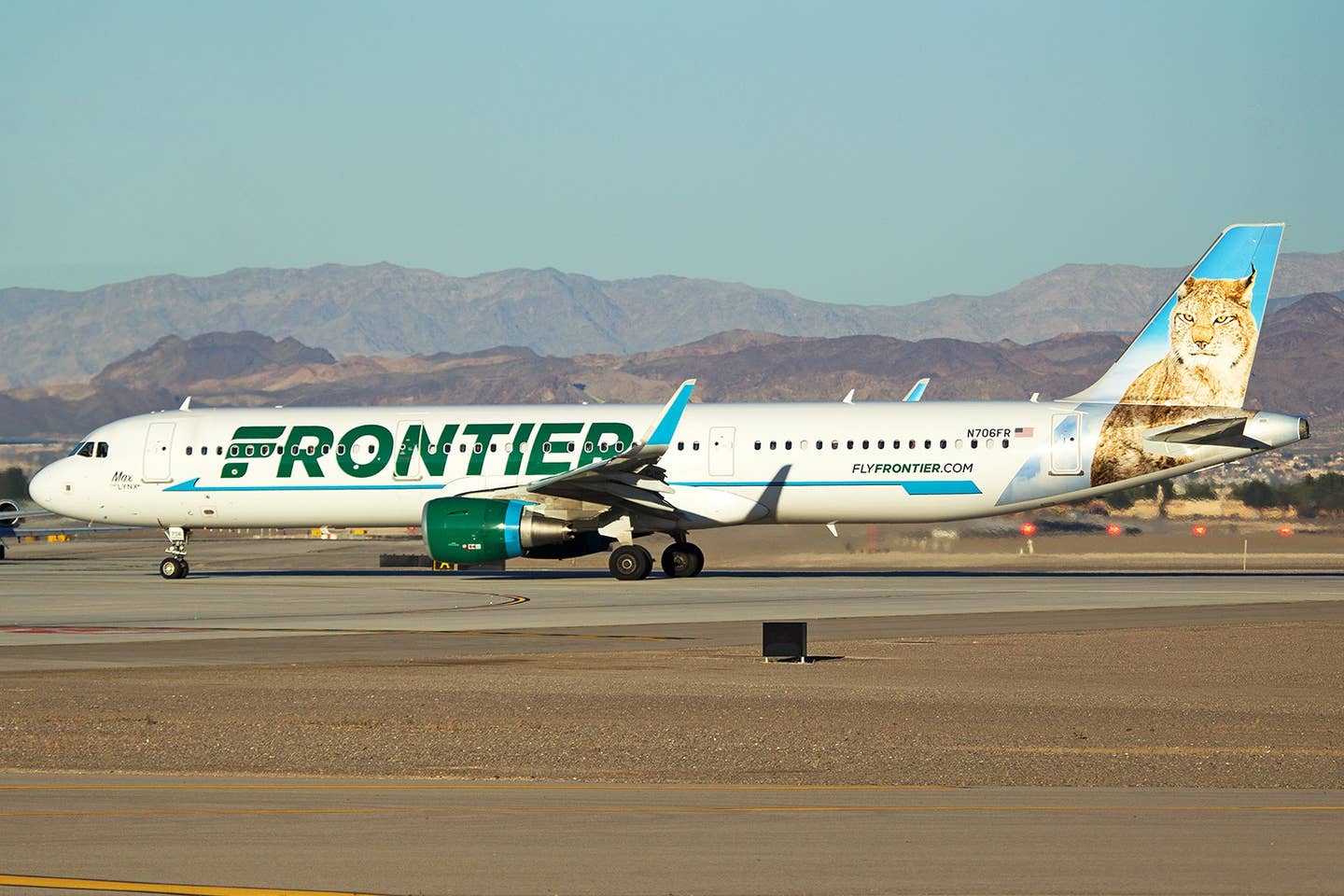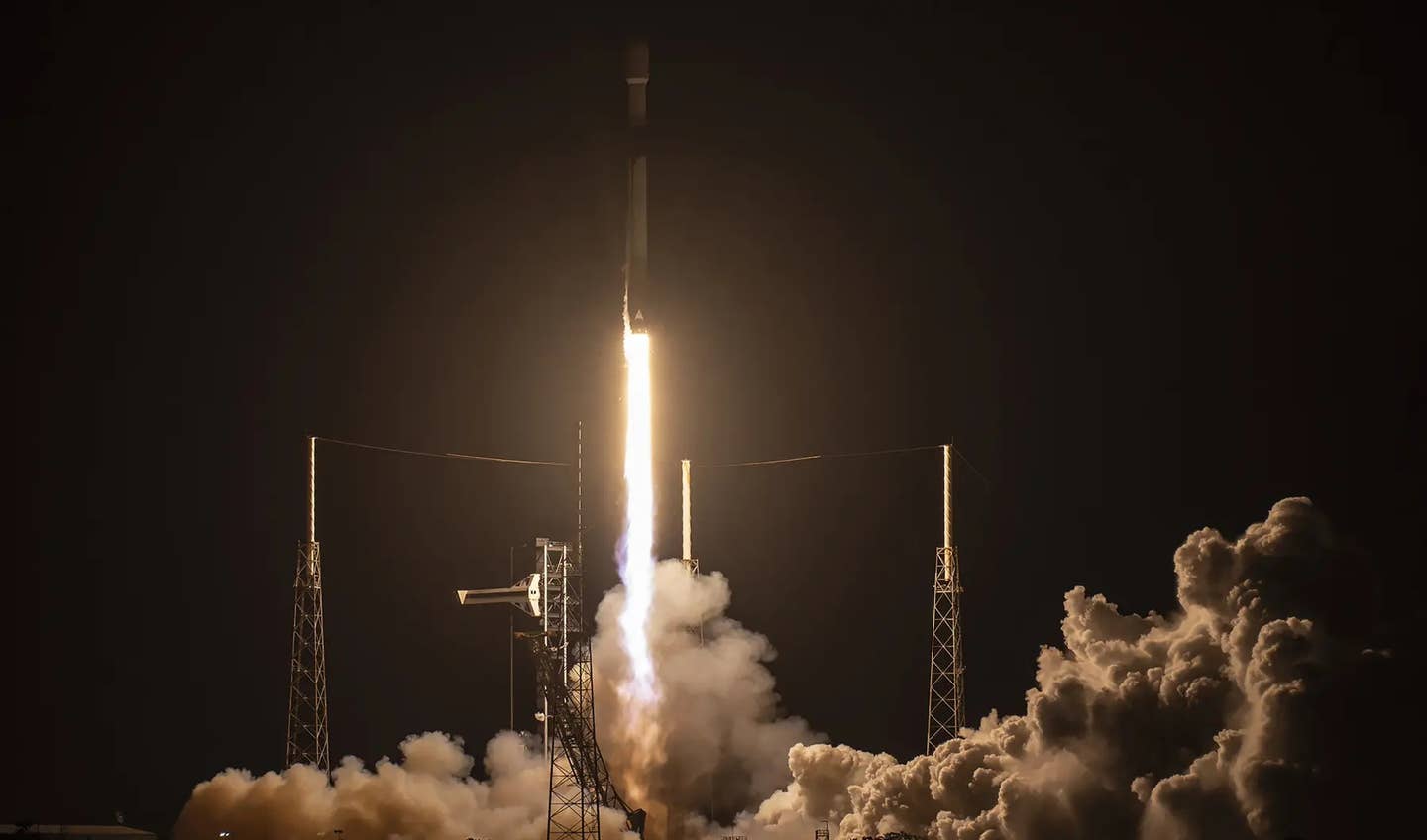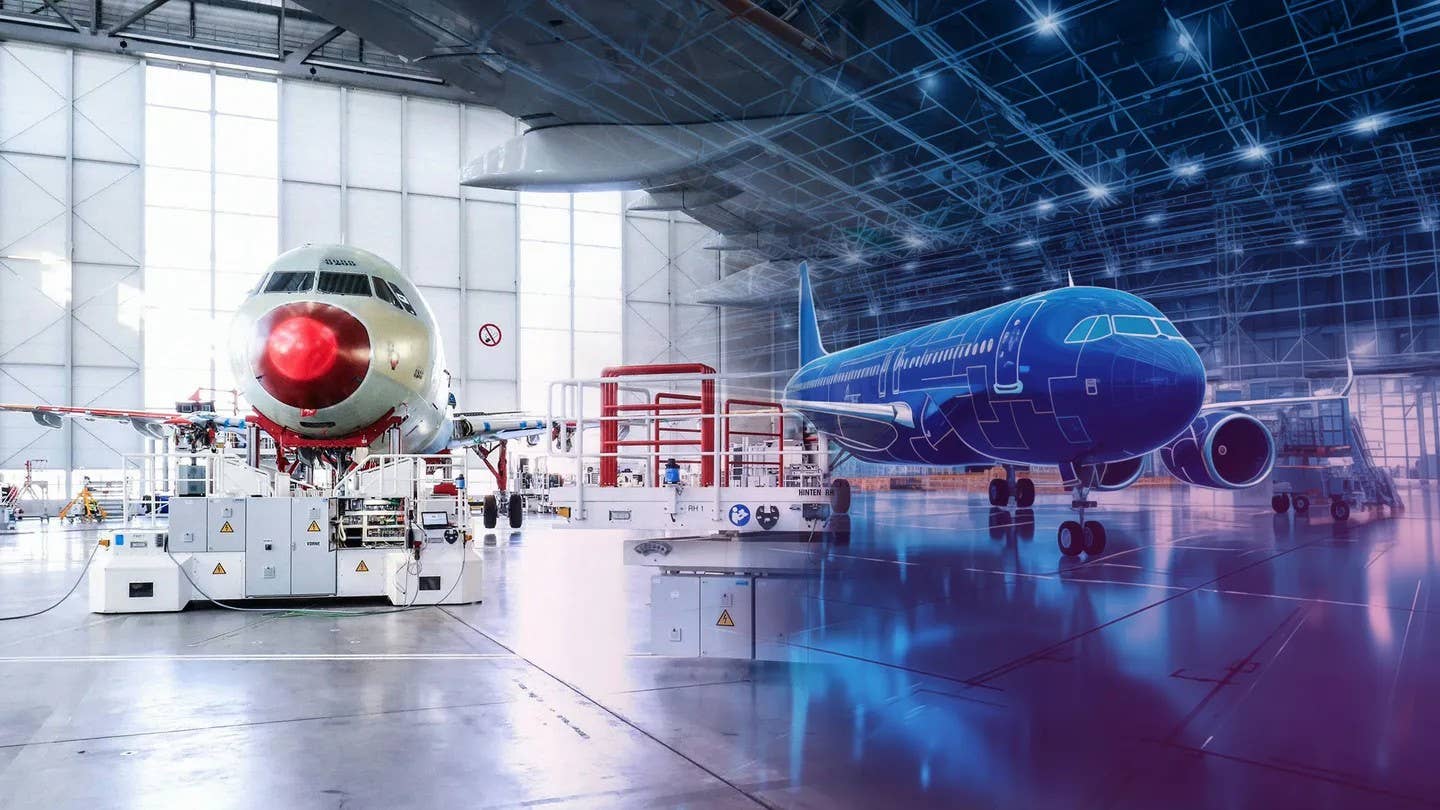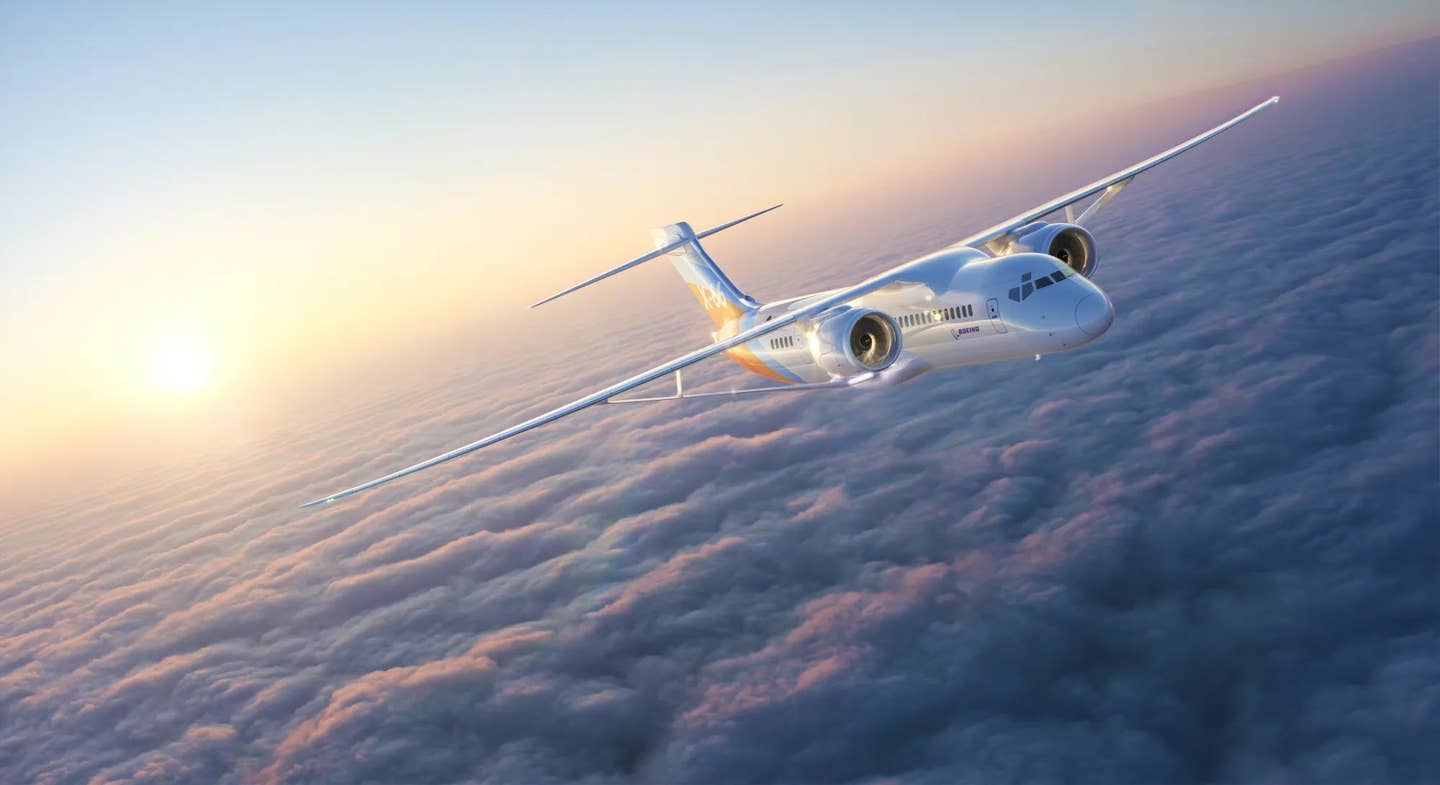NTSB: ‘Chemical Smell’ Prompted Frontier A321 Emergency Landing
Flight crew said the odor increased in intensity, later describing it as ‘burning rubber and/or petroleum products, such as plastics.’

A Frontier A321 in Las Vegas [Credit: AirlineGeeks | William Derrickson]
A Frontier Airbus A321 made an emergency landing on October 5 in Las Vegas after crewmembers detected an unidentified odor, the National Transportation Safety Board said in a preliminary report Monday.
The odor was initially noticed by the cabin crew, which described it as a “chemical smell” that was unidentifiable, the agency stated. Flight attendants reported the smell—which was only detected in the forward portion of the cabin—to the pilots before they noticed a similar odor.
Frontier Flight 1326 was operating between San Diego and Las Vegas at 29,000 feet when the odor was first detected. The pilots later noticed the chemical, mildew-like smell in the flight deck.
According to the NTSB, the flight crew said the smell increased in intensity, later describing it as “burning rubber and/or petroleum products, such as plastics.”
The crew put on oxygen masks and began a smoke and fumes checklist. An emergency was declared and the crew began to descend toward Las Vegas.
With no smoke present in the cockpit or cabin, the crew opted to place the aircraft into an electrical emergency configuration, which limits various systems, including first officer-side displays and radios. The crew struggled to communicate with air traffic control as a result, instead using the aircraft’s No. 1 transponder to acknowledge instructions.
The A321 landed on Runway 26L and was met by emergency vehicles. A nearby witness heard “two loud bangs in quick succession as the tires exploded about three seconds after touchdown. Then there was a large screen of smoke behind them and fire around the tires.”
Initial reports from airport fire crews stated that there was a fire on the aircraft’s No. 2 engine, which was extinguished. But the crew received no such indication, the report said.
The NTSB noted that flight data showed a fault on one of the fans that cool the avionics bay. None of the 197 passengers and crew were injured, and the aircraft remains out of service.
Editor’s Note: This article first appeared on AirlineGeeks.com.

Sign-up for newsletters & special offers!
Get the latest FLYING stories & special offers delivered directly to your inbox






